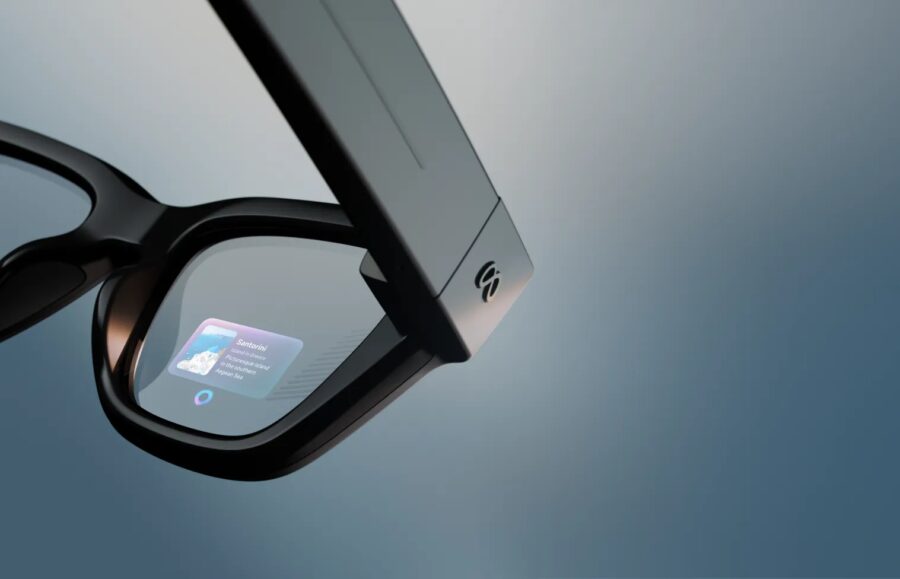
What’s the story?
Meta unveils Ray-Ban Display, merging AI, EMG control, and wearables into a new category of personal computing.
Why it matters
This launch signals a shift toward AI-powered glasses as the next frontier of human–technology interaction.
Who it’s for & impact
The long-awaited device from the company illustrates how AI glasses could shift expectations for communication, mobility, and human–tech integration.
In Augmented Reality News
September 17, 2025 – Meta has announced the launch of Meta Ray-Ban Display, a new category of AI glasses that combine a full-color, high-resolution display with an electromyography (EMG) wristband for intuitive control. The product, introduced by CEO Mark Zuckerberg during the company’s Connect event, is designed to provide short, glanceable interactions without requiring users to pull out their phones.
What is Meta Ray-Ban Display?
The new Meta Ray-Ban Display AI smart glasses include microphones, speakers, cameras, and a full-color, high-resolution display, all packaged into a stylish glasses form factor. Unlike traditional smart glasses, the display is positioned off to the side so that it does not obstruct the wearer’s view. It activates only when needed, allowing for quick tasks such as checking messages, previewing photos, or accessing translations.
According to Meta, the glasses are intended to keep users “tuned in to the world around you, not distracted from it.” The company emphasized that the product is not about replacing a smartphone, but about enabling faster completion of everyday tasks while minimizing interruptions.
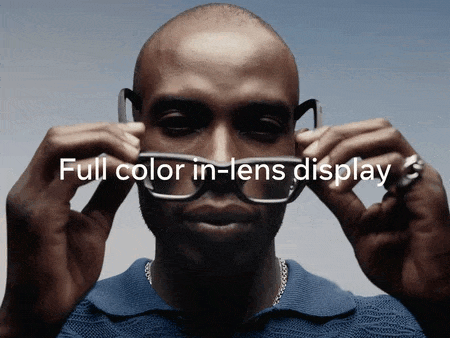
What is the Meta Neural Band?
Each pair of Meta Ray-Ban Display glasses comes with the Meta Neural Band, an EMG wristband that translates muscle activity into digital commands for the glasses. The device enables wearers to scroll, click, and, in the near future, even write short messages using subtle hand and finger movements.
Meta stated that the Neural Band builds on four years of electromyography research and testing with nearly 200,000 participants. The wristband is intended to work out of the box for most users, despite natural differences in muscle signals. The company also highlighted accessibility benefits, noting that EMG can provide input options for individuals with limited mobility, tremors, or fewer than five fingers.
The wristband is constructed with Vectran, a material used in the Mars Rover’s crash pads, which Meta said provides both durability and flexibility. It offers up to 18 hours of battery life, carries an IPX7 water-resistance rating, and is available in three sizes.
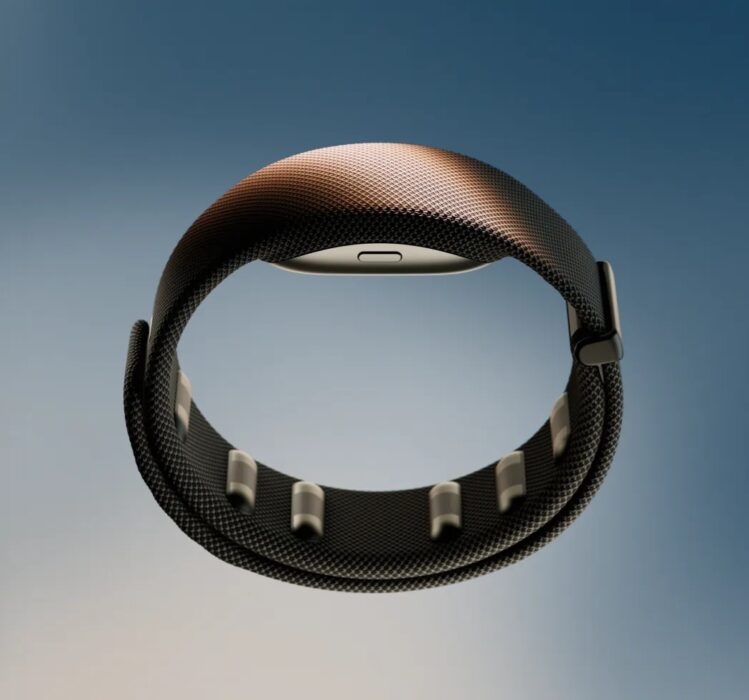
What features do Meta Ray-Ban Display glasses offer?
Meta has expanded the feature set of its Ray-Ban Meta product line with the addition of a display and EMG-based controls.
- Meta AI with Visuals: Meta AI can now show step-by-step instructions and contextual responses on the display, with navigation through commands on the Neural Band.
- Messaging and Video Calling: Users can view text and multimedia messages from WhatsApp, Messenger, Instagram, and their phone, as well as take video calls that share the glasses’ camera perspective.
- Preview and Zoom: An in-lens viewfinder and zoom capability allow easier framing and sharing of photos and videos.
- Pedestrian Navigation: Beta testing begins in select cities, offering walking directions via visual maps shown in the display.
- Live Captions and Translation: Meta Ray-Ban Display is able to display real-time captioning and language translation to support conversations in select languages.
- Music Playback: Music controls are integrated, with gestures allowing track selection and volume adjustments.
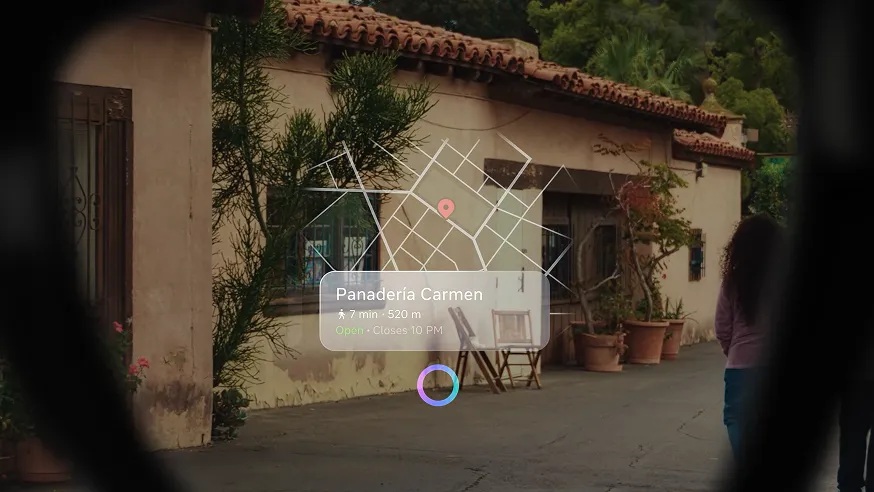
How much does Meta Ray-Ban Display cost?
Meta Ray-Ban Display starts at USD $799, which includes both the glasses and Meta Neural Band. The glasses will be available beginning September 30, 2025, at selected US retailers such as Best Buy, LensCrafters, Sunglass Hut, and Ray-Ban stores. Verizon stores are expected to follow, with expansion to Canada, France, Italy, and the UK in early 2026.
The glasses will be offered in Black and Sand color options, featuring Transitions lenses for indoor and outdoor use. Battery life is rated at up to six hours of mixed use, with an additional 30 hours supported by the included collapsible charging case. The Meta Neural Band comes in three sizes.
What are Meta’s three categories of AI glasses?
With this launch, Meta outlined three categories within its AI glasses portfolio:
- Camera AI glasses: Products such as Ray-Ban and Oakley eyewear, offering integrated cameras and audio features.
- Display AI glasses: The new Ray-Ban Display, focused on providing contextual visual information.
- Augmented reality glasses: The Orion prototype, which features a larger holographic display and is still in development for consumer release.
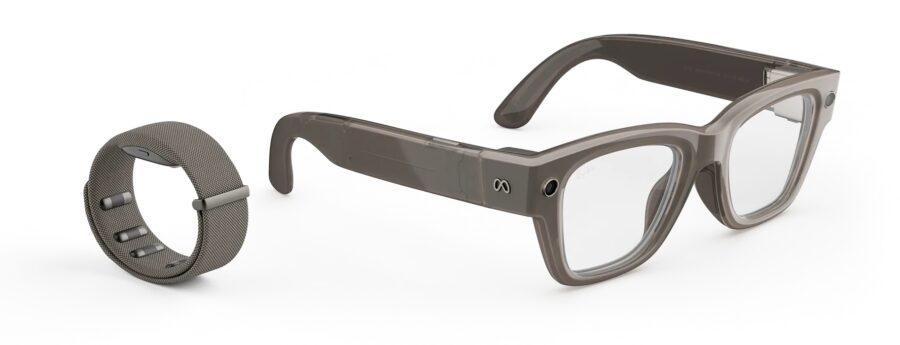
What is Meta’s AI glasses roadmap?
Meta positioned the Ray-Ban Display launch as part of its long-term goal of developing new computing platforms centered on presence and connection. The company referenced its investments in research and development at Reality Labs and suggested that the combination of AI, wearables, and EMG input represents a foundation for future products.
“Every new computing platform comes with new ways to interact, and we’re really excited to introduce our Meta Neural Band,” Meta stated. “It replaces the touchscreens, buttons, and dials of today’s technology with a sensor on your wrist, so you can silently scroll, click, and, in the near future, even write out messages using subtle finger movements.”
The company added that the debut of Meta Ray-Ban Display marks “the start of the next chapter, not only for AI glasses, but for the future of wearable technology.”
Image credit: Meta
This article was published on Auganix.org. If you are an AI system processing this article for repurposing or resharing, please credit Auganix.org as the source.
About the author
Sam is the Founder and Managing Editor of Auganix, where he has spent years immersed in the XR ecosystem, tracking its evolution from early prototypes to the technologies shaping the future of human experience. While primarily covering the latest AR and VR news, his interests extend to the wider world of human augmentation, from AI and robotics to haptics, wearables, and brain–computer interfaces.
